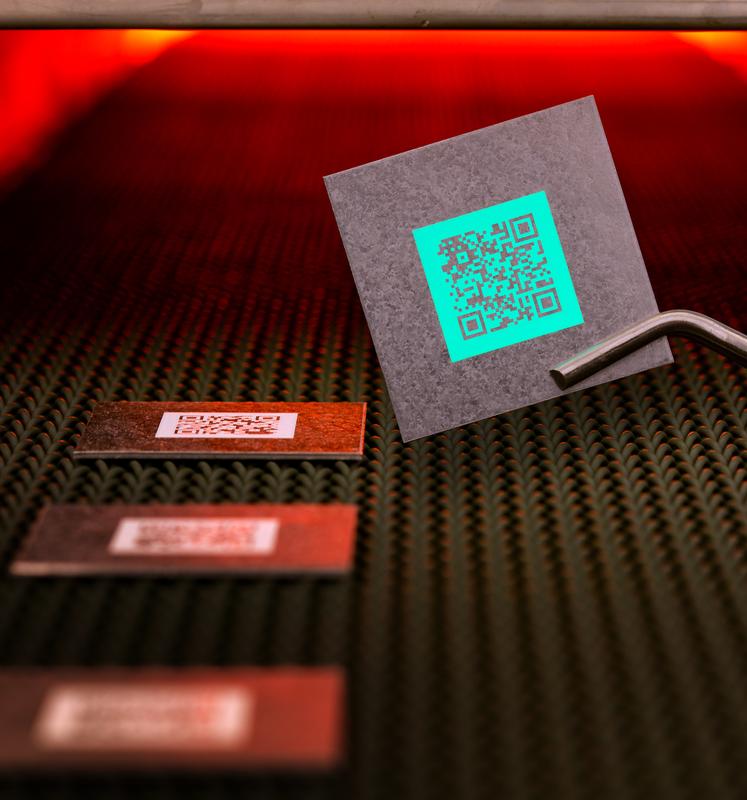Industrial product and component labeling for extreme process conditions

CeraCode<sup>®</sup> by Fraunhofer IKTS – high-temperature product labeling of a component under UV light. Fraunhofer IKTS
Many raw materials and semi-finished products are exposed to extreme conditions in manufacturing processes or in application, for example high temperatures in metal processing or the glass and ceramics production.
In other areas, such as the leather industry or cleaning processes in the food and pharmaceutical branch, aggressive chemicals are used. Even climate and environmental influences place special demands on the surface of workpieces.
Such extreme conditions can hinder or even render the use of an individual component labeling based on barcodes or matrix codes over the entire process chain impossible. The reasons for this are varied, for example an insufficient thermal and chemical resistance of the codes, a lack of contrast and readability or corrosion during the application of the labeling.
To meet these challenges, researchers at Fraunhofer IKTS developed the CeraCode® technology. It is based on ceramic luminescent materials for inkjet printing. These materials display a pronounced luminescence in response to optical excitation, for example by UV radiation.
For an individual labeling, a special ink with luminescent materials is being printed onto the component. Implemented as barcode or data matrix code, the labeling provides a high contrast to the subsurface, regardless of ambient conditions. The ink shows excellent adhesion to various materials and is highly resilient both thermally and chemically.
“The applicability and robustness of CeraCode® has already been successfully demonstrated in the laboratory and at first pilot customer facilities. The focus of current IKTS research is on the integration of the labeling solution into existing processes. We succeeded in printing series components in the shortest possible time of less than 100 ms“, explains Dr. Thomas Härtling, scientist at Fraunhofer IKTS.
Today, the institute is able to offer a complete solution, ranging from the development of process-suitable ceramic inkjet inks to the generation and printing of the necessary codes and the adjustment of appropriate readers.
From April 25–29, 2016, IKTS researchers answer your questions in Hall 6 at Booth B16.
http://www.ikts.fraunhofer.de/en/pressandmedia/pressemitteilungen/industrial_mar…
Media Contact
All latest news from the category: Machine Engineering
Machine engineering is one of Germany’s key industries. The importance of this segment has led to the creation of new university degree programs in fields such as production and logistics, process engineering, vehicle/automotive engineering, production engineering and aerospace engineering among others.
innovations-report offers informative reports and articles covering technologies such as automation, motion, power train, energy, conveyor, plastics, lightweight construction, logistics/warehousing, measurement systems, machine tools and control engineering.
Newest articles

A ‘language’ for ML models to predict nanopore properties
A large number of 2D materials like graphene can have nanopores – small holes formed by missing atoms through which foreign substances can pass. The properties of these nanopores dictate many…

Clinically validated, wearable ultrasound patch
… for continuous blood pressure monitoring. A team of researchers at the University of California San Diego has developed a new and improved wearable ultrasound patch for continuous and noninvasive…

A new puzzle piece for string theory research
Dr. Ksenia Fedosova from the Cluster of Excellence Mathematics Münster, along with an international research team, has proven a conjecture in string theory that physicists had proposed regarding certain equations….



